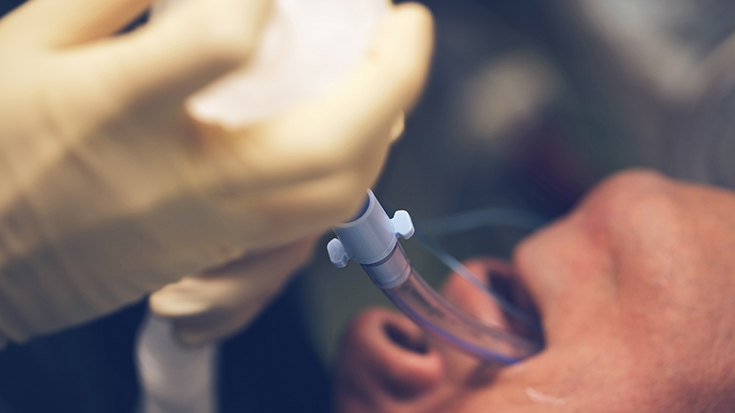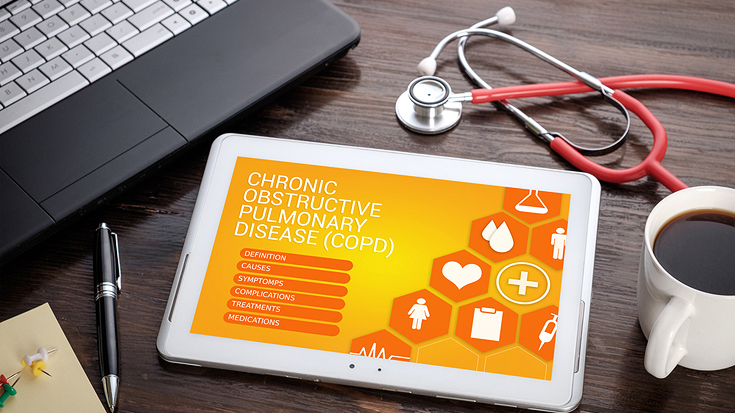
Unplanned extubations complicate the care of patients in the ICU, and as the lung health experts at the bedside, RTs must be proactive in identifying factors that place patients at risk.
According to RESPIRATORY CARE Associate Editor Rich Kallet, MS, RRT, FAARC, FCCM, that means paying close attention to “common sense” preventative measures and using your knowledge of the specific patient and situation to avert trouble before it starts.
“Common sense considerations include assuring that endotracheal or tracheostomy tubes are properly secured at regular intervals — e.g. as part of ventilator systems checks and particularly during intra-hospital transports,” said Kallet, who has published extensively on respiratory care topics in peer review journals. “Situational factors include increased vigilance in patients undergoing bedside procedures or therapies that may induce stress.”
Kallet believes RTs should be especially mindful when their nursing colleagues are caring for more than one ventilated patient at a time and when newer team members are working the night shift as well, as these scenarios have been linked to an increased risk for unplanned extubation.1
Minimizing unplanned extubations is in the RT’s wheelhouse, says Kallet, because they are the bedside clinicians most responsible for airway care.
“This is particularly important because unplanned extubation is not only a safety issue, it’s now considered to be a quality of care issue,” he said. “Although relatively infrequent, the occurrence of unplanned extubation can and does result in tragedy when it occurs in patients with a compromised airway or in those who are physiologically unstable despite high levels of supportive care.”
Rich Kallet suggests RT departments implement these best practices in the area of unplanned extubation —
First, essential features of any program aimed at reducing the risk of unplanned extubation must include 1) a proactive quality improvement surveillance program that monitors the incidence of and factors associated with unplanned extubation, and 2) staff education and routine quality improvement updates on performance as well as updated information on best practices.
Respiratory care services should take a leadership role in these initiatives and work collaboratively with other members of the critical care team. These factors are important because if you don’t know what transpires in your hospital you can’t gauge the prevalence of the problem. And if you don’t collect data on the circumstances involved in unplanned extubation you can’t possibly be effective at minimizing the risk. Be proactive; don’t wait for a serious adverse event to be the trigger for action.
Parenthetically, the additional importance of items 1 and 2 are that they’ve been reported to reduce the risk of unplanned extubation between 22 to 53%.2
Second, the method for securing endotracheal or tracheostomy tubes should be standardized. Studies suggest that the lack of standardization in securing artificial airways is associated with higher incidences of unplanned extubation.2 This is important because it suggests that allowing clinicians to “ad-lib” how tubes are secured invariably leads to haphazard techniques.
Third, be proactive in eliminating obvious problems that increase the likelihood of unplanned extubation by implementing standardized practices such as: 1) documenting the position of the endotracheal tube according to placement at the teeth/gums and referenced to post-intubation chest radiograph; 2) monitoring and specifying endotracheal tube cuff pressures and volumes (e.g. overinflated cuff volume and associated pressures often lead to agitation and likely induce self-extubation to alleviate the pain and discomfort; 3) ensuring the ventilator circuit is maintained on an arm-support; 4) ensuring the endotracheal tube is secure before, during, and after intra-hospital transport.
Fourth, most incidences of unplanned extubation are patient-initiated and tend to occur in those exhibiting restlessness and agitation, particularly when combined with inadequate sedation, and in those who are being weaned from mechanical ventilation.2,3 We recently reported that over 90% of our unplanned extubations occurred in patients who met weaning readiness criteria; 60% did not require re-intubation.4 Another study found only 20% of surgical patients who self-extubated required reintubation.5
The importance of these findings for clinicians are two-fold: first, agitation in critically ill ventilator-dependent patients who appear to be under-sedated and/or in pain should be assessed and treated promptly to reduce the risk of unplanned extubation; second, agitated patients reasonably recovered from their illness who also meet weaning readiness criteria should be given a spontaneous breathing trial and, if they pass, fast-tracked to a trial of extubation.
Kallet emphasizes these easy-to-implement practices can minimize the risk of unplanned extubation. Implementing and monitoring them simply requires a quality assurance program and educational structure.
“Respiratory care services are well-positioned and -suited to provide leadership in this area,” he said.
References
1. Bouza C, Garcia E, Diaz M, et al. Unplanned extubation in orally intubated medical patients in the intensive care unit: a prospective cohort study. Heart Lung 2007;36(4):270-276.
2. Da Silva PS, Fonseca MC. Unplanned endotracheal extubation in the intensive care unit: systematic review, critical appraisal, and evidence-based recommendations. Anesth Analg 2012;114(5):1003-1014.
3. Kiekkas P, Aretha D, Panteli E, et al. Unplanned extubation in critically-ill adults: clinical review. Nurse Crit Care 2013;18(3):123-134.
4. Kallet RH, Summers TJ, Lipnick MS. Characteristics of unplanned extubation events in the critical care setting. Respir Care 2018;63(Suppl 10):3016944.
5. Lee J-H, Lee H-C, Jeon Y-T, et al. Clinical outcomes after unplanned extubation in a surgical intensive care population. World J Surg 2014;38:203-210.
Email newsroom@aarc.org with questions or comments, we’d love to hear from you.










